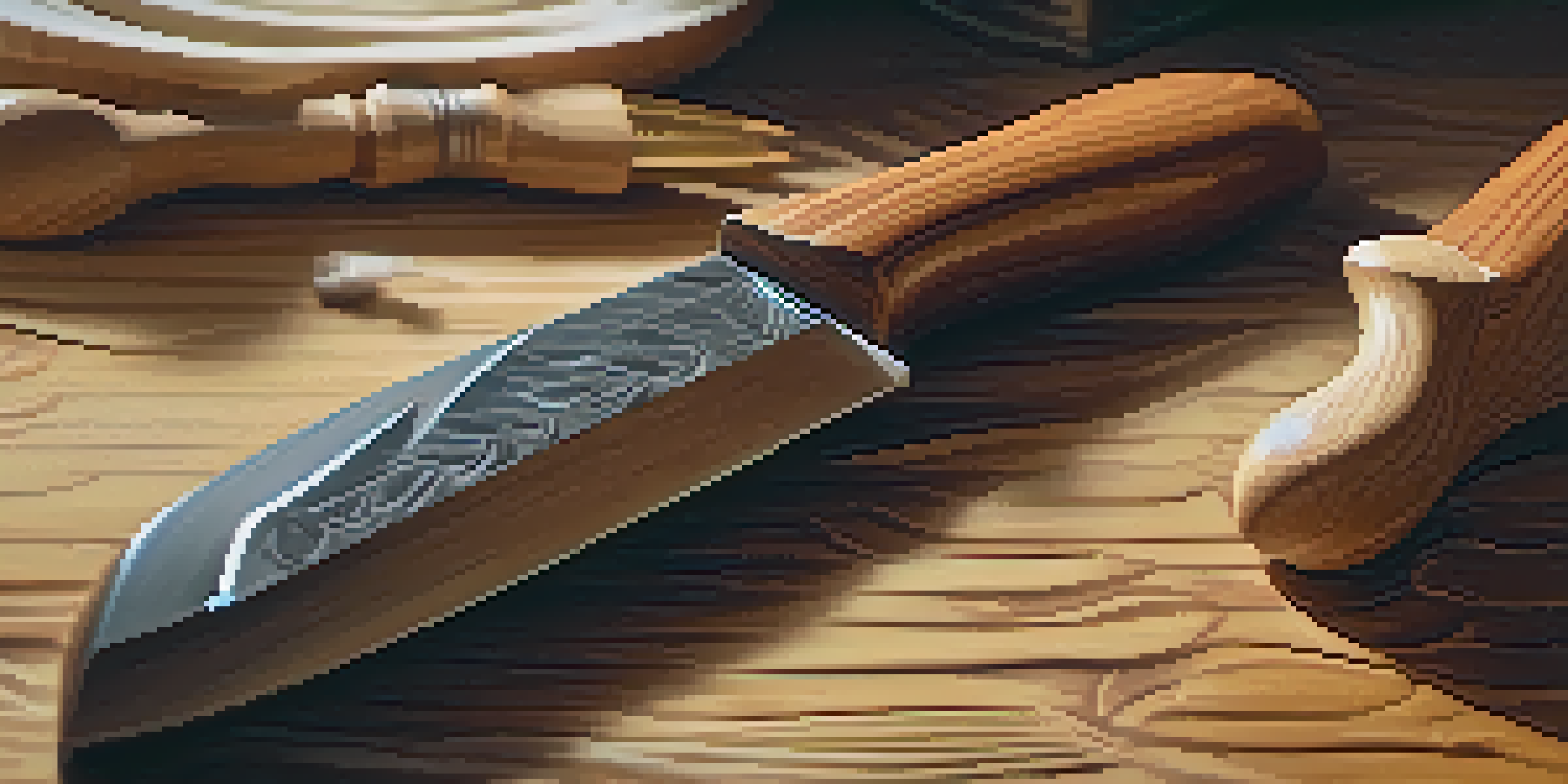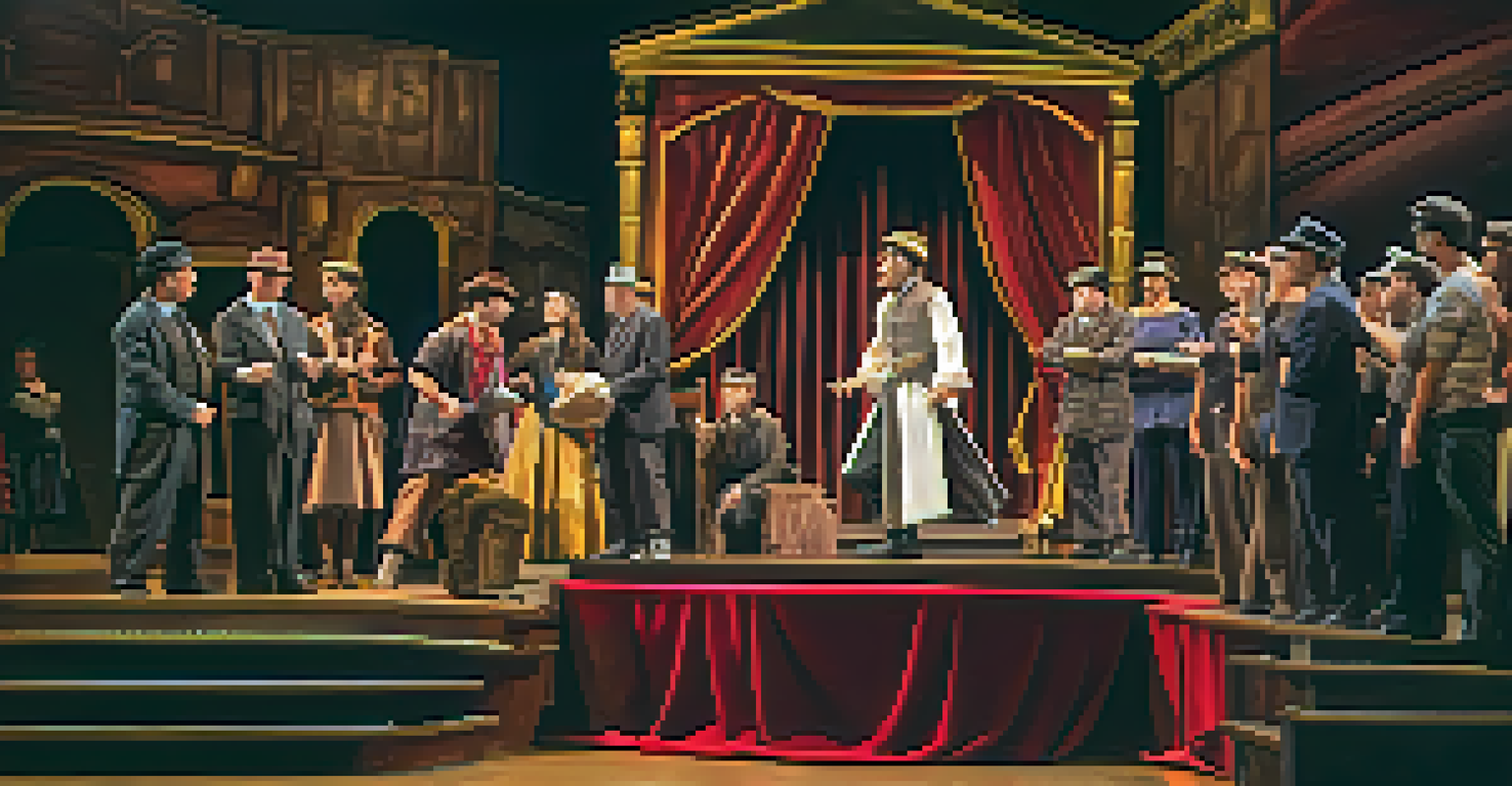Carving Techniques for Realistic Theater Set Props

Understanding the Importance of Realistic Props in Theater
Realistic props are crucial for immersing the audience in a theatrical performance. They help set the tone and enhance storytelling, making the world of the play feel authentic. When a prop looks genuine, it allows viewers to suspend disbelief and engage more deeply with the narrative.
The beauty of theater is that it is a collaborative art form, where every piece, including props, plays a critical role in bringing the story to life.
Theater set props can range from everyday objects to fantastical items, and their realism often depends on the skill of the prop maker. Carving techniques play a significant role in achieving this realism, transforming simple materials into lifelike representations. By mastering these techniques, set designers can elevate the overall production quality.
Moreover, realistic props contribute to the actors' performances as well. When performers interact with believable items, it enriches their portrayal and allows them to connect more genuinely with the audience. Thus, understanding carving techniques is essential for anyone involved in set design.
Choosing the Right Materials for Carving Props
The choice of material can significantly impact the final look and feel of your set props. Common materials include wood, foam, and plaster, each offering unique qualities and challenges when it comes to carving. For instance, wood can provide a classic, sturdy appearance, while foam is lightweight and easy to manipulate.

When selecting materials, consider the prop's intended use and the level of detail required. For highly detailed pieces, harder woods or high-density foam are often preferred. On the other hand, if the prop needs to be lightweight or fragile, softer materials might work better.
Realistic Props Enhance Storytelling
Realistic props immerse the audience in the play, making the narrative feel authentic and engaging.
Additionally, think about how the material will interact with lighting and stage effects. Some materials absorb light, while others reflect it, which can significantly alter the prop's appearance during a performance. This consideration can help you choose the best material for your vision.
Basic Carving Techniques Every Prop Maker Should Know
Starting with basic carving techniques is essential for any prop maker. Techniques such as whittling, chiseling, and sanding form the foundation of realistic prop creation. Whittling, for instance, is great for achieving intricate details on wooden props, while chiseling allows for more substantial shaping.
Realism in props transforms the mundane into the extraordinary, inviting the audience to step into the world created on stage.
Sanding is another critical technique that smooths out rough edges and imperfections, resulting in a polished look. It’s often the final touch that can make a prop go from basic to breathtaking. Investing time in mastering these techniques will pay off as you create increasingly complex props.
To practice these skills, consider starting with small projects, like simple shapes or everyday objects. As you gain confidence, you can gradually move on to more elaborate designs, allowing your creativity to flourish alongside your technical skills.
Advanced Carving Techniques for Realistic Effects
Once you've mastered the basics, you can explore advanced carving techniques that enhance realism. Techniques like relief carving and chip carving add depth and detail to your props, making them stand out on stage. Relief carving involves removing material to create a three-dimensional effect, while chip carving creates decorative patterns on the surface.
Using tools like rotary cutters or specialized chisels can help achieve these advanced effects. These tools allow for more precision and intricacy, making it easier to replicate realistic textures found in nature, like bark or stone. Experimenting with different tools can lead to exciting discoveries in your carving process.
Material Choice Influences Design
Selecting the right materials for props affects their appearance and interaction with stage lighting, impacting overall realism.
Additionally, incorporating mixed media techniques can elevate your props even further. Combining carved elements with paint, fabric, or other materials can create stunning visuals that captivate audiences. This cross-disciplinary approach allows for greater creativity and innovation in prop making.
Incorporating Textures and Finishes for Realism
Texture is a vital element in making props look realistic. Different surfaces, whether rough, smooth, or patterned, can evoke specific feelings and associations. Techniques like stippling, brushing, and glazing can add depth and realism to your props, transforming them from simple shapes into convincing objects.
Applying various finishes, such as varnish or paint, can further enhance the appearance of your props. For example, using a matte finish can give a more natural look, while a glossy finish may be suitable for items like glass or metal. Experimenting with different finishes can help you find the perfect look for each prop.
In addition, consider the use of color and shading to create the illusion of depth. Techniques like dry brushing and airbrushing can help achieve a more dynamic appearance, making props appear more three-dimensional and lifelike. This attention to detail greatly influences the audience's perception of the prop.
Safety and Best Practices in Prop Carving
Safety should always be a priority when working with carving tools and materials. Proper handling and storage of tools can prevent accidents and injuries. Always wear appropriate safety gear, such as gloves and goggles, to protect yourself while carving.
Another best practice is to maintain a clean and organized workspace. A clutter-free environment reduces the risk of accidents and makes it easier to focus on your work. Keeping tools sharp and in good condition will also improve your carving accuracy and efficiency.
Collaboration Brings Props to Life
Working with directors and actors ensures that props are effectively integrated into the production, enhancing their visual and functional impact.
Lastly, don’t hesitate to seek advice or feedback from more experienced prop makers. Joining workshops or online communities can provide valuable insights and tips that enhance your skills. Collaboration and sharing knowledge are essential in any creative field.
Bringing Your Carved Props to Life on Stage
Creating realistic props is just the beginning; bringing them to life on stage is where the magic happens. Collaboration with directors, lighting designers, and actors can help ensure that your props fit seamlessly into the production. Understanding how your props will be used in performance is crucial for their design.
Consider how the lighting will interact with your props. The way light hits a surface can dramatically change its appearance, influencing the audience's perception. Discussing lighting plans with the production team can help you make adjustments to your props to enhance their visual impact.

Finally, be open to feedback during rehearsals. Observing how actors interact with your props can provide insights into their functionality and realism. Adapting your designs based on these observations can lead to even more effective and engaging performances.